Sustainable Fleet Management
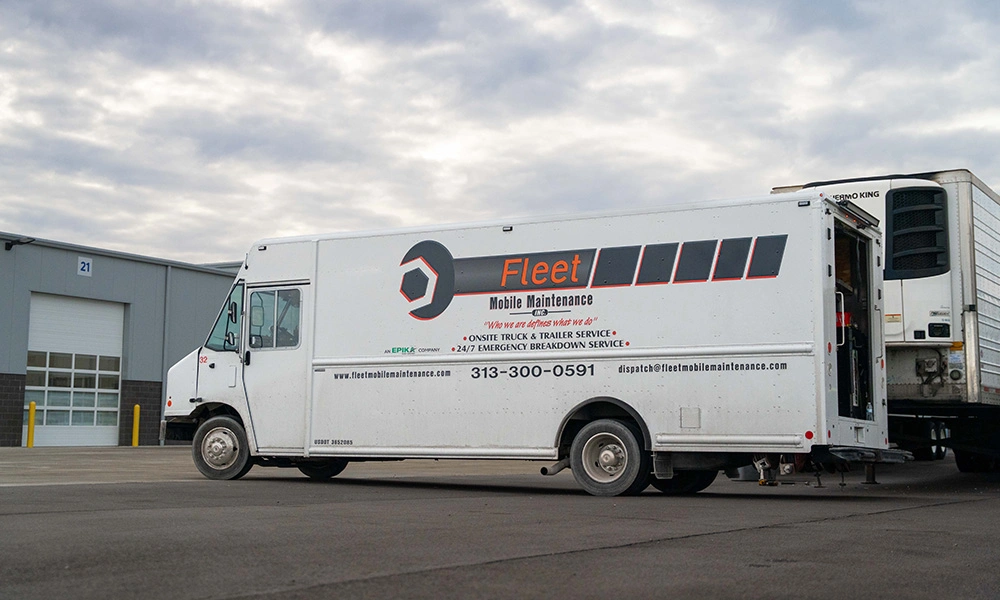
There’s an increasing awareness, nationally and globally, of the impact humanity has had over the past centuries on the environment. Everything is coming under scrutiny, from petroleum production to cargo ships to farming to the clothing we wear. It’s no surprise that one of the biggest targets is worldwide logistics, shipping, and fleets. With the rapidly evolving transportation landscape, sustainable fleet management has become more than just a buzzword, it’s a necessity.
Any company operating a fleet should strive to implement sustainable fleet management that needs to be more environmentally friendly. Why? This can open doors to new contracts and opportunities, as an increasing number of clients prioritize working with environmentally conscious logistics providers. This way, you can enhance your brand image and garner increased public support. Moreover, with the rise of “Clean Air Zones” in urban centers, a less sustainable fleet might find itself increasingly restricted in its operational areas.
Besides, sustainable fleet management actually translates into more cost-effective and efficient operations. Fleet sustainability isn’t just a feel-good initiative; it’s a smart business strategy that can boost your bottom line while making a real difference.
What is Fleet Sustainability?
Fleet Sustainability means running your commercial trucks in a way that’s easier on the planet — and your budget. It’s not just about fuel; it’s about the whole operation, from tires to tech. It’s all about cutting down on fuel waste, emissions, and wear and tear — from day one till the last mile. The scope is wider than just fuel consumption; it includes vehicle dealerships, maintenance garages, driver behavior and route optimization, all of which affect the ecosystem in the long run.
Consider fleet sustainability as an all-encompassing strategy. It is about much more than transitioning to electric vehicles, although that could be the cherry on top of the cake. It requires a step-by-step assessment of operations to optimize everything from accelerating to decelerating and addressing idling concerns. At the end of the day, sustainable fleet management facilitates better environmental care and preserves resources for healthier living, not only for future generations but also for optimizing businesses at all levels.
Why is Fleet Sustainability Important?
The importance of fleet sustainability stems from a confluence of environmental, economic, and social factors. Air pollution and the emission of greenhouse gases are a major problem for the transportation sector of any country. Fleet operators have the means and tools to adopt policies, procedures, and sustainable practices that can greatly improve their businesses while making a tremendous contribution to reducing air pollution. Sustainable fleets can improve the quality of air and health across the globe, and this impacts your drivers and indeed everyone living in the communities where your heavy-duty trucks operate.
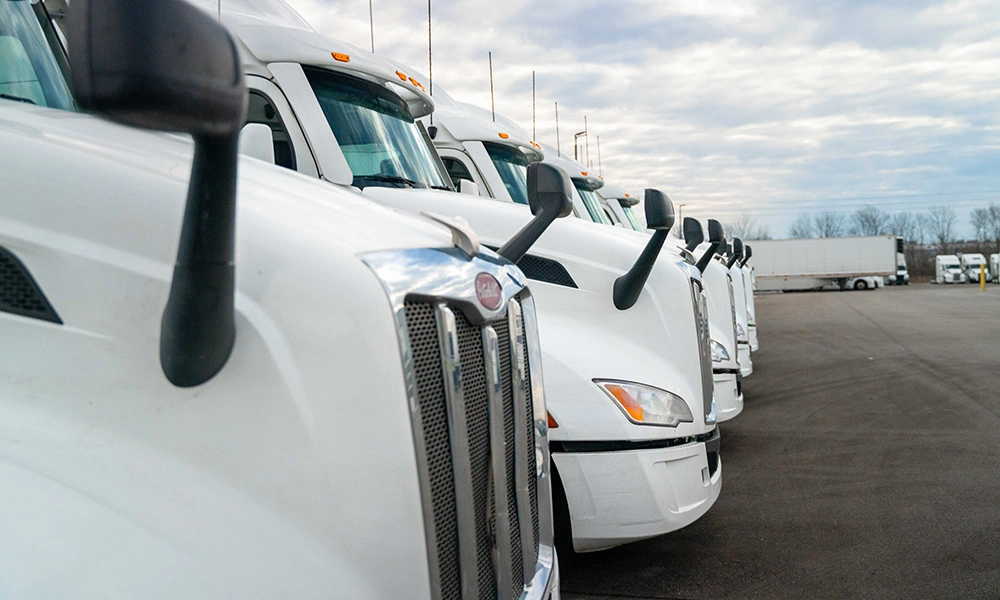
Moreover, cost efficiency is often attributed to sustainable fleet management. Better fuel economy, lower repair costs due to timely maintenance, and prudent waste management all result in better value for money. Also, as quoted before, endorsing sustainability will almost definitely improve the perception of the company and market value, strengthen relations with green clients, and open doors to business opportunities and government incentives. Socially, operating a sustainable fleet demonstrates corporate responsibility and a commitment to a better future, which can improve employee morale and attract talent who value environmental stewardship.
Stages of Implementing Sustainable Fleet Management
When transitioning to a sustainable fleet, it needs to be approached with structure. The question is, how can your fleet push to be more sustainable in 2025 and beyond? The answer is straightforward. As with any logistical planning, clear sequential steps must be designed. These steps allow for a comprehensive self-assessment, setting goals, formulating a sustainable fleet management strategy and setting up monitoring systems.
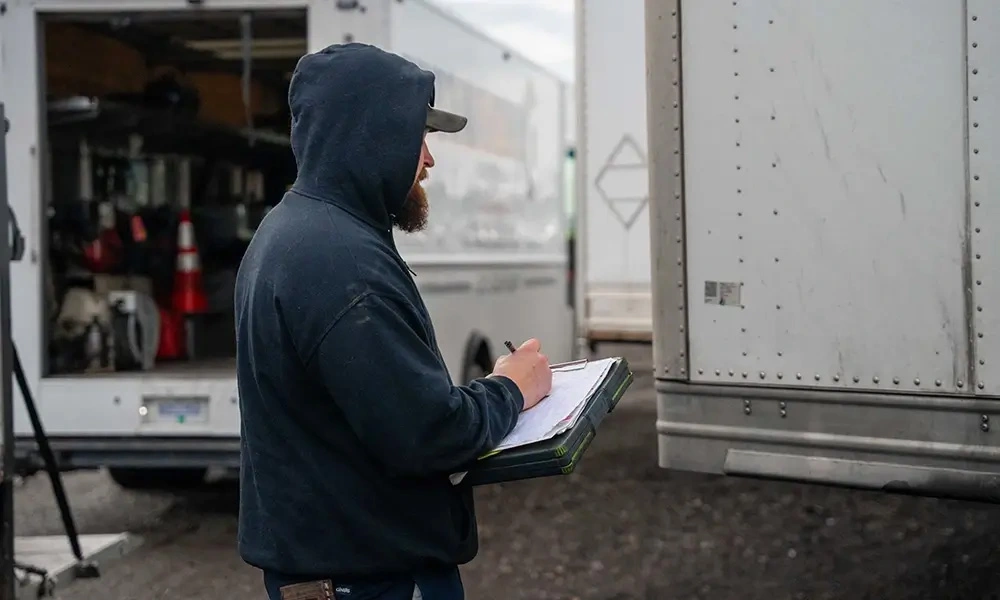
Step 1: Assess Your Current State and Set SMART Goals
The first thing you need to do is set tangible goals to work towards. You can’t just say you want to “be more sustainable” without having any idea what that means. By setting goals, you can then develop a plan and a timeline to reach them.
Goals should be SMART. SMART is an acronym that helps define the goals you set for your business.
- Specific. A goal should have a specific metric that seeks to reach a specific target.
- Measurable. A goal should follow some specific metric that can be monitored to watch progress and benchmark actions you take.
- Achievable. A goal should be something reasonable to achieve rather than pie-in-the-sky goals you’d have no way of actually living up to.
- Relevant. The other elements of the goal need to be relevant and important to the overall goal.
- Timely. The goal needs to have a timeline for achieving it or milestones towards reaching it.
For a sustainable fleet, a SMART goal might be to reduce carbon emissions by 75% by 2030, to be net zero by the same date, or even something as comparatively simple as switching to all-electric vehicles in the near future as EV adoption continues.
Step 2: Strategy development and planning
After establishing goals, formulate actionable strategies that address the outlined objectives. This could mean looking for and acquiring new commercial trucks that are optimized for fuel usage, alternative fuels (within the scope of local infrastructure), telematics for optimization, and better fleet maintenance. Consider all the costs involved to achieve a feasible plan for sustainable fleet management.
Step 3: Implementation and training
Execute the outlined plan while considering investments in necessary hardware and software technologies. Most importantly, train your drivers and team on new practices. For example, if you are bringing in fuel-efficient driving, extensive training must be provided. Effective two-way communication creates collaboration toward fleet sustainability.
Step 4: Monitoring and Evaluation
Assess how your work affects the environment on a continual basis. Actively monitor key metrics like fuel consumption and emissions using telematics and fleet management software. Achieving data-driven goals becomes easier when there is ongoing analysis and review with checkpoints towards fleet sustainability.
Step 5: Review and improvement
Sustainability is not a one-time effort; it’s an ongoing practice. Comprehensively review all parts of your analytics and strategies and modify objectives regularly to progress toward your sustainable fleet goals.
5 Key Strategies for Sustainable Fleet Management
The path to a more sustainable fleet involves making changes across various aspects of your operation. Here are five key areas where focused effort can yield significant environmental and economic benefits:
Driver Behavior Adjustments for Sustainable Fleet Management
Driver behavior can be a significant source of climate impact. While it might not seem like a single driver being slightly inefficient with their habits is going to have a huge impact, when you consider all of those “minor” factors adding up across the whole of a fleet across an entire year of operations, you can see how changes to baseline habits can make a difference in fleet sustainability.
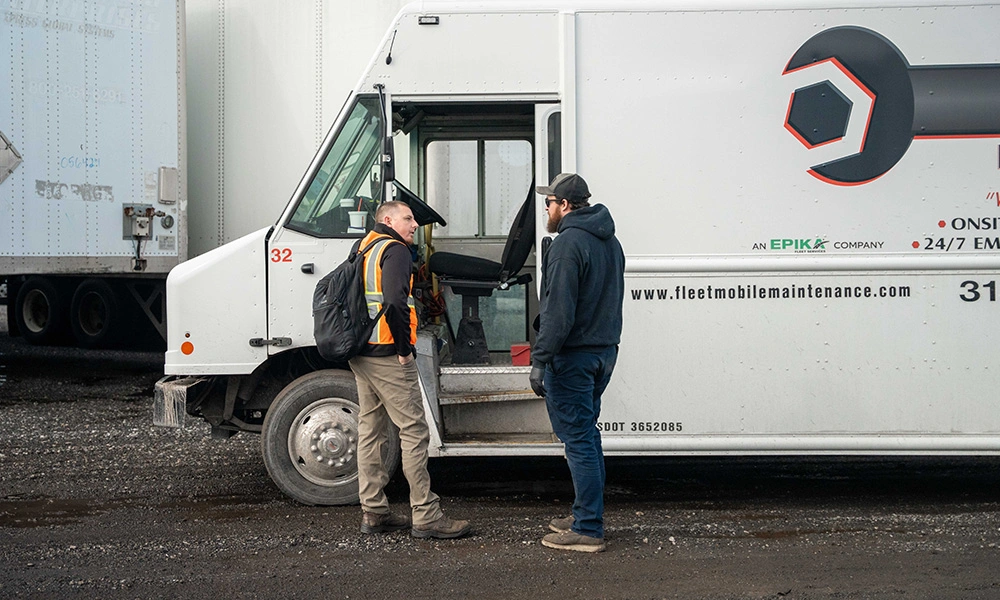
Changes drivers can make to be more efficient and climate-friendly include:
- Reducing idling: The more time a heavy-duty truck is running, the more emissions it puts out.
- Slower maximum speeds. The optimal speed for logistics trucks is around 60 MPH; the faster you go above that, the more inefficient your fuel usage.
- Avoiding harsh speed changes. Harsh acceleration burns more fuel than a slower, more gradual acceleration; similarly, harsh braking wastes more energy and puts more wear on brakes and tires, which shed particles that can damage the environment as well.
- Encourage more proactive inspection and maintenance. Even something as simple as proper tire inflation can have a surprisingly outsized impact on overall vehicle efficiency which also plays a key role in preventing fleet-related accidents and improving response strategies.
All of this can have a surprisingly immediate impact and requires nothing more than some driver training, coupled with monitoring from your telematics (but more on that later.)
One thing to note here is that you can’t rely on self-driving vehicles to save you. Forget about them—for most fleets, they’re still out of reach. Focus on tools you can use now to cut emissions and improve uptime. Second, they tend to work best only for long-haul trips like highway journeys, and even then, only in ideal conditions. If you operate in tricky areas, urban areas, last-mile deliveries, or inclement weather, you’ll have a much harder time using the technology. Don’t rely on future tech to jump you to your sustainable fleet management goals without putting in the work.
Vehicle and Equipment Changes for Sustainability
Replacing fleet vehicles is always an immense expense, and given the relatively tight margins upon which many fleets operate, it can be a tall order to make the switch. However, switching to vehicles that can run on greener alternative fuels – or even switching to entirely electric commercial trucks – can go a long way in helping you achieve fleet sustainability.
- Switching to entirely electric vehicles is a tall order. In many cases, you may be better off investing in conversions or new vehicles that split the difference.
- Hybrid vehicles, or even just vehicles that use alternative, more efficient, or sustainable fuel sources, can be a good middle-of-the-road step, especially if you don’t have the electric vehicle infrastructure in your area necessary to support operations.
- Install solar charging stations at your facility if space allows—this offsets operational costs and boosts your sustainable fleet management capabilities.
This may involve some calculation. Identify what the cost would be to invest in and keep an electric truck in operation and monitor the cost of operating and repairing a Petro-fueled vehicle, while also factoring in IRS-compliant fleet mileage logging systems that help with sustainability reporting and tax accuracy. When the cost of maintaining the older vehicle exceeds your threshold, upgrade to an electric vehicle and ditch the run-down truck. This can be a rolling improvement, but each new investment has an immediate and tangible impact on your fleet’s sustainability.
If possible, consider timing your purchases. Oftentimes, governments and some third-party interest groups provide grants or rebates for electric and sustainable fleet and infrastructure investment, but these can also be eaten up and run out in the first quarter of the year. You may be able to plan your improvements to be timed so that you qualify for those grants to ease the burden and improve your investment.
Switch to Sustainable Fleet Management Technology
First up, you need to implement and use a robust tracking and telematics system for your fleet. Use Active GPS so you always have robust location information for your vehicles. Make sure your telematics harvests as much data as you can and feeds it directly into your fleet management platform. This way, you have as much data as possible to use to optimize your fleet company-wide. This does two things.
- It allows you to figure out where the biggest strategies you can implement for the biggest immediate change would be; in other words, it helps you identify the low-hanging fruit to focus your efforts on building a sustainable fleet.
- It allows you to see the direct and tangible impact of any changes you make, so you have the data to use in the (M)easurable part of your SMART goals for sustainable fleet management. After all, how do you know any of your efforts bear fruit if you aren’t monitoring the harvest?
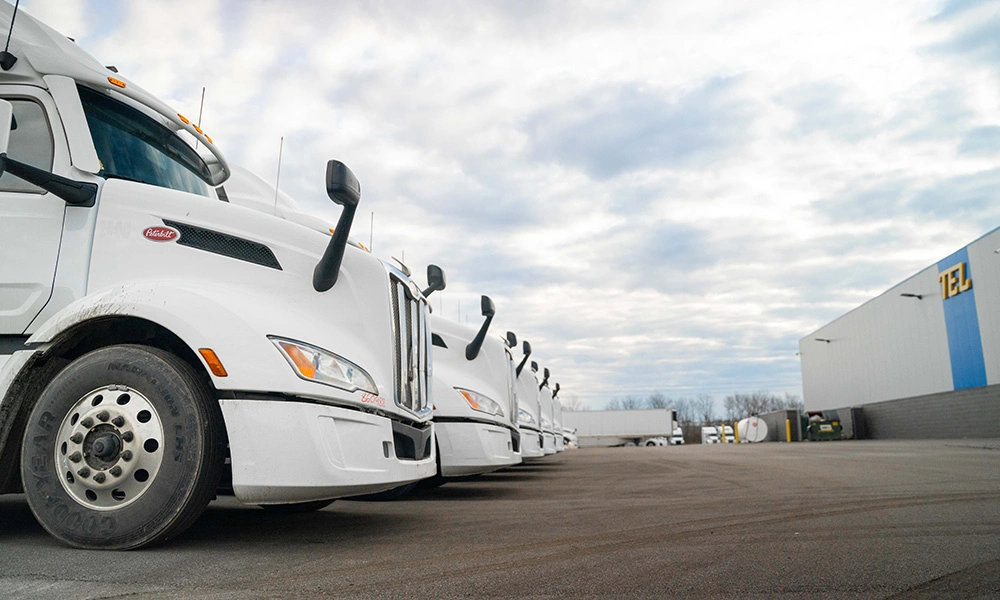
This may involve fleet-wide expenses as you upgrade and configure your telematics and tracking systems. Unfortunately, that’s just the cost of participation in the proactive changes you want to make towards fleet sustainability. Our best advice is to put serious thought and research into the systems you use and be as future-proofed as possible. The cheaper you are with your telematics, the less useful the data will be, and the sooner you will need to upgrade again to keep up.
Don’t forget, as well, that sustainability in operations can go beyond just your fleet. There may be many cases where your company still uses paper where digital solutions are readily available. The transition can be time-consuming, but paperless systems are often more reliable, free of human error, faster, and much more sustainable. You need to think about not just your fleet itself but the whole of your company’s operations.
Fleet Utilization and Routing Optimization
Another fleet management option you have is optimizing your fleet utilization and routing. Most logistics companies have some idea of what routes they need vehicles to handle on what days; optimizing which vehicles start and end where and when is a complex problem, but modern fleet management platforms can help significantly with this optimization, contributing to a more sustainable fleet. For more on-demand fleet usage, optimizing everything from specific city routes to personnel assignment can have a significant impact and may even be invisible to the drivers, adding no additional burden to your employees. This is especially relevant for fleets composed of commercial trucks and heavy-duty trucks, where even small improvements in routing can lead to significant sustainability gains.
Fleet Right-Sizing and Iterative Goal Tracking
A potentially more extreme option you have available to you is fleet right-sizing. Some fleets have excess vehicles in operation, which means drivers get fewer hours, vehicles spend more time idle, and inefficiencies add up, hindering fleet sustainability. Conversely, some fleets have too few drivers and vehicles, meaning some are kept on the road far more than they should, and it encourages inefficient and dangerous driver habits to meet deadlines and quotas. Figure out how many vehicles you should have, and either add more or remove some from your fleet to meet that ideal size for better sustainable fleet management.
Note: Remember that the right size is not necessarily the bare minimum. Insulating yourself from catastrophe is a big part of proper right-sizing. If one vehicle is taken out of service by a highway collision, that shouldn’t devastate your company.
Throughout all of this, it’s important to keep an eye on your milestones and goals for fleet sustainability. Which ones do you reach or exceed, and which ones do you meet faster than expected? Which ones do you struggle to reach? Your goals should be iterative, moving targets. Always strive for improvement. Standards will change, technology will improve, and what may be in the top 10% of sustainable fleets today might not even be in the top 50% in a few years. Always work towards improvement.
The Future of Sustainable Fleets
Change is constant in the world of fleet management, especially concerning electric vehicles which is the first step toward achieving fleet sustainability. Alongside the development of EV technology, expansion in the range of models, improved charging time, and increased vehicle ranges are on the rise. Developing efficient charging infrastructure is essential for the widespread adoption of electric fleets. Beyond electrification, research into and adoption of other alternative fuels, such as hydrogen and advanced biofuels, will likely play a significant role in decarbonizing the transportation sector.
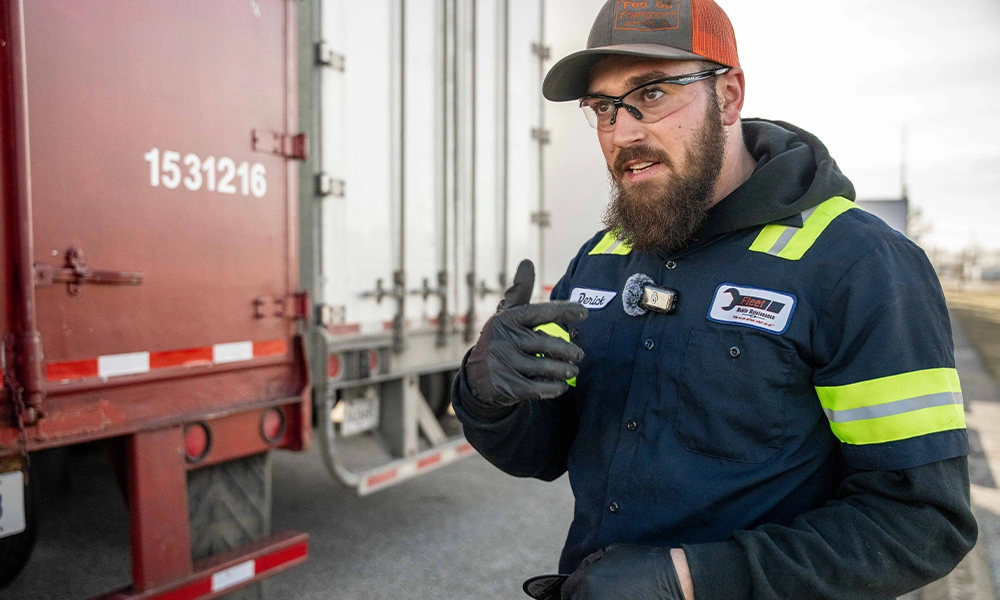
Artificial intelligence (AI) and machine learning (ML) need to be integrated into fleet management systems as this will help increase efficiency in predictive maintenance, route optimization, and energy management. Although still evolving, self-driving vehicle technology can enhance fuel efficiency through optimized speed and acceleration control. The future of sustainable fleets will be shaped by the convergence of emerging technologies, evolving regulations, heightened public expectations for clean logistics, and stricter fuel emission standards—creating a system that responds to growing environmental concerns. To thrive and make the most of the upcoming years, fleets need to adapt to new technologies and stay up to date.
When it comes to implementing the right technology and finding the service partners to keep your trucks running efficiently and cleanly, EPIKA is here to help. Explore our range of solutions and connect with our network of trusted providers. Let’s build a more sustainable and profitable future for your fleet, together.
